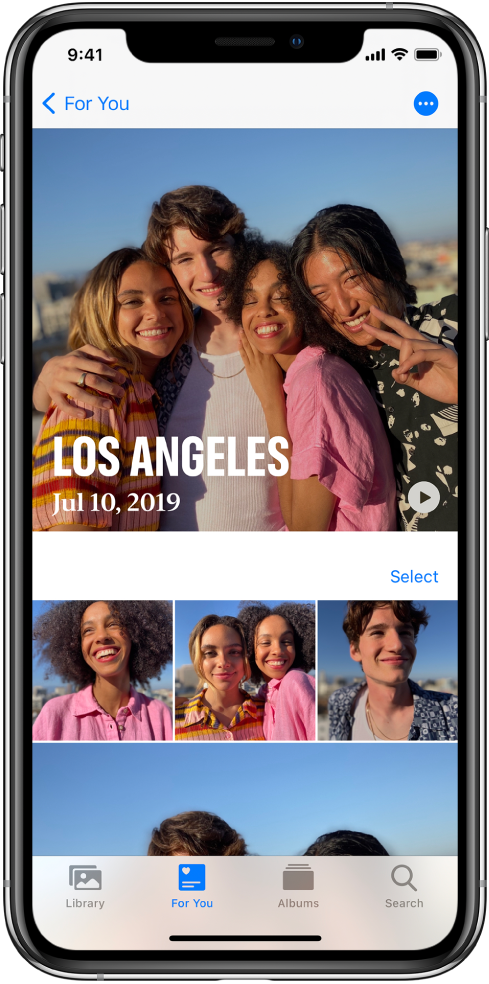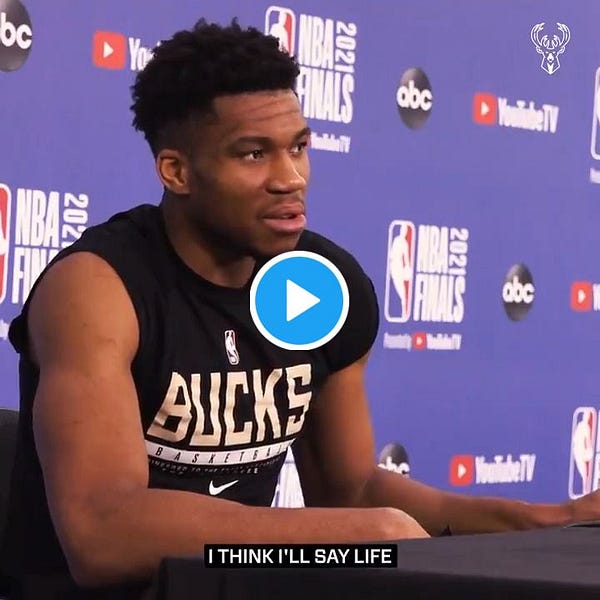A few ideas to improve iOS Notes
"Everything Starts Out Looking Like a Toy" #53
This week’s toy: when you just can’t remember that character you want to type, draw it instead and let shapecatcher show you the most likely unicode glyphs. I’m not sure that this sort of OCR+AI could solve my handwriting, according to my family, but it’s a really neat way to find 😊 or 🀳 or 🀹 when you are seeking just the right emoji.
Edition No. 53 of this newsletter is here - it’s July 24, 2021.
The Big Idea
Apple’s “Memories” feature auto-generates a mini-movie made up of images from your camera roll on your iOS device. I enjoy seeing these pop up from time to time (Google Photos has a similar feature) and think it’s an interesting way to surface items from your photos that you don’t look at frequently.
What if you could do the same thing with To-Do lists and ideas? Put another way, what would a “Memories” feature look like if it were focused on the Notes and Reminders apps? As a person who creates Notes, what would I want this feature to do with the things I put in certain lists? For my reminders, which ones do I think are interesting to hear about later?
Here’s a visual of how this might fit together in a UI:
The concept is to take IDEAS - things I already capture in Notes – and to surface them as Apple’s Memories app does in a way that clusters TOPICS of interest, gives me items to EXPLORE, and prompts me to set reminders and schedule the actual PRACTICE to solidify that idea into a thing I do all of the time instead of just jot down in a note and forget.
Practice as a Service
Let me start by saying that I love to-do lists. Maybe too much. My default go-to item when I am thinking about a problem is to build a list. But it’s not enough to get the job done. As Nir Eyal points out, building a list is often an impediment to scheduling the time to sit down and actually do the work.
With that in mind, how would a “Practice as a service” app work?
I want to start with a simple input: IDEAS I had last week.
An idea is a note I create in my Notes app in a folder I’ve asked the service to review. I’d expect the Note to have a create date (this is automatic). I want the service to be able to analyze anything in this folder and no other Notes folders, and do the following:
Find TOPICS - I’d like to hand off the analysis of the notes themselves to something like Monkeylearn. In a perfect world I’d be able to get the top 3 or 5 topics that are related to the notes I created in a week, and store that reference so that I could see how the the topics in my notes changed over time.
Suggest areas to EXPLORE - Based on the topic analysis of these notes, the app should give me 1 new thing to explore each time period (perhaps weekly?). What are things to explore? We could start with matching a web article to a topic and giving me the ability to thumbs up / thumbs down this article and then give me a prompt to write an IDEA note related to that article (creating a flywheel eventually)
Remind me to PRACTICE - this is where we start building a behavioral loop. The output of closing and idea should be the setting of a reminder to do a thing. Ideally you would get a sample task (a reminder) with limited recurrence to avoid jamming your schedule with things that never happen.
Learn about the way you approach ideas
Today, Note apps ask you to do work to associate information. They rely on you to set up a schedule for following up.
The idea of Practice as a Service is to take the inputs you are already building (To-do lists, Reminders, Calendar items) and to shape them into themes that force you to think about areas to explore and new Practices to build.
Think of this as an executive coach for your executive function.
What’s the takeaway? I might have just described something that already exists. But I’m not sure it does. Existing note-taking apps provide the structure you could use to build a service like this and don’t provide next level analysis of the content and actions. Have you seen something like this?
A Thread from This Week
Twitter is an amazing source of long-form writing, and it’s easy to miss the threads people are talking about.
This week’s thread: on self-driving efforts without LIDAR - are 📷 enough?


Links for Reading and Sharing
These are links that caught my eye.
1/ Delivery-only fast casual as a service - Wingstop is introducing Thighstop, a “ghost kitchen” offering available through Doordash and other delivery services. This is interesting if you think about the “unbundling” of fast-food restaurants into the service of producing different types of food at scale. Ghost kitchens provide additional demand for high-margin items and maximize the use of the existing people, utilities, and real estate in an existing retail location. If you want to read more about the ghost kitchen phenomenon, check out Shay Colson’s summary.
2/ Your eyes don’t see certain colors - WHAT? It turns out that the way we see blue is processed by our brain by blending inputs. Here’s a fancy science way of explaining it. The next time you are looking at colors out in the world you might think on the fact that you are seeing a blended and post-processed reality. This also goes a long way toward explaining why we don’t always see the *exact* same colors as each other.
3/ Spitballs and spinballs - not gonna say that going after MLB pitchers for using foreign substances while pitching is going to help teams like the Mariners who have really horrible batting averages, but … the data suggests the pitches will be less crafty as an impact of the new rule.
On the Reading/Watching List
The latest documentary on the late Anthony Bourdain raises some ethical questions about AI-generated audio using the person’s words but not their actual voice. I don’t mind the idea of doing this as long as it is flagged (actor portrayal, or “AI-generated” actor portrayal). After all, no one expects verisimilitude from a Ken Burns documentary of Civil War-era soldiers. On the other hand, since there are no selfies or audio of those soldiers, we are primed to expect re-creation rather than recording.
Whatever you think of athletes, spend 2 minutes to watch Giannis talk about the need to stay present.
What to do next
Hit reply if you’ve got links to share, data stories, or want to say hello.
I’m grateful you read this far. Thank you. If you found this useful, consider sharing with a friend.
Want more essays? Read on Data Operations or other writings at gregmeyer.com.
The next big thing always starts out being dismissed as a “toy.” - Chris Dixon







